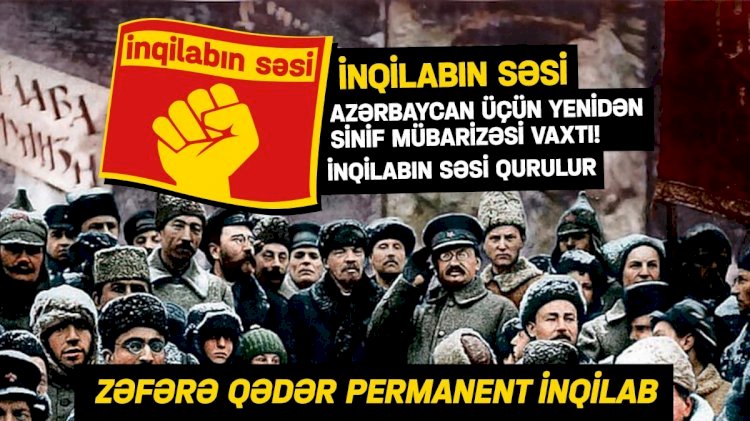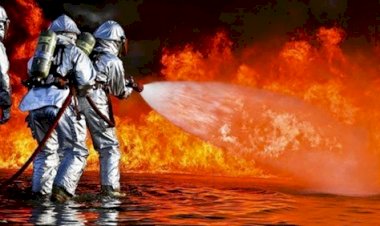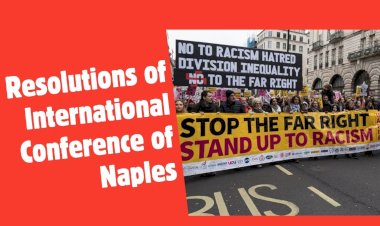Afghanistan: US Withdrawal and Taliban’s Reactionary Triumph, Misery Continues for the Masses

This article originially published in Asian Marxist Review
By Hassan
The recent spike in terrorist activities of militant groups in Afghanistan’s capital and elsewhere in the country underscores the fragility and complexity of the situation on the ground. The US-Taliban “peace” deal seems to be in disarray after the Afghan president Ashraf Ghani initially ordered his armed forces to be in “aggressive” mode against the Taliban insurgents. But so weak and frail is Ghani’s government, that in contrast to his earlier belligerence, on May 26th he pledged to release 900 Taliban prisoners. On the other hand, US imperialism after concluding the instrument of surrender with Taliban, dubbed as “Peace Deal”, spending over $1trillion on the Afghan war and having more than 2400 of its soldiers dead over the last two decades, is now rushing to withdraw its forces as per the terms of the “Peace Deal” with Taliban. The Afghan government is struggling to keep itself alive as an uncertain future is looming over its head, more so for the unfortunate populace of the country.
The terrorist attacks in Afghanistan are relentlessly raging even after the peace deal has been signed between the US and Taliban in Doha, Qatar on February 29th. Some of these attacks were attributed to IS-KP (Afghan branch of ISIS). Taliban outrightly denied they carried out some of these attacks and even condemned the attack on a maternity hospital in Kabul. It is quite hilarious that one of the annexes of the deal is that Taliban would, henceforth, not attack the US and coalition forces whereas it is not bound by any clause of the agreement not to attack the Afghan forces. Consequently, when President Ashraf Ghani blamed Taliban for the maternity hospital attacks, Taliban carried out a suicide attack on an Afghan military convoy killing 5 civilians and injured dozens in retaliation for being blamed for the maternity hospital attacks. Such is the present precarious and miserable position of the Afghan government.
US-Taliban Peace Deal: An Instrument of Defeat
Paradoxically, the Taliban was created and armed by Pakistan with the tacit support of US imperialism. After the collapse of Soviet Union, all eyes were on the untapped oil and gas reserves of the Caspian Sea and Central Asian states. The United States wanted to control these resources but to unlock these treasures, a pipeline had to be built from Turkmenistan through Afghanistan and then to Pakistan ending up in the Arabian Sea. The interim President of Afghanistan Burhanuddin Rabbani had already granted the pipeline contract to Argentinean Bridas Corporation, much to the dismay of American UNOCAL. When Taliban ousted the interim President Burhanuddin Rabbani and took over Kabul in September 1996, the US’s then Assistant Secretary of State for South and Central Asian Affairs, Robin Raphel, termed it as a “positive step”. She even met several Taliban leaders including Mullah Muhammad Umer and supported UNOCAL-led gas pipeline project. But after the bombing on US embassies in Tanzania and Kenya, UNOCAL withdrew from pipeline negotiations with the Taliban.
In the aftermath of 9/11 attacks, US imperialism and its stooge United Kingdom invaded Afghanistan to overthrow Taliban, punish Al-Qaeda for the 9/11 attacks, fight terrorism and build democracy. Initially, they succeeded in ousting the Taliban from power and installed a puppet regime in its place. The euphoria of initial conquest soon started to dissipate and a renewed Taliban insurgency began to haunt them. With the support of the Pakistani state, Taliban swiftly reorganized and struck back through guerrilla attacks, suicide bombings on coalition forces’ convoys, targeting government and NATO installations and civilian targets, so much so that Taliban started controlling a large swathe of the country. The mightiest military power on earth with all its technological advancement, sophisticated weaponry and aerial supremacy proved utterly impotent in containing the resurgent Taliban.
The covert support of the regional states, especially of Pakistan, to the Taliban made US military superiority meaningless. Afghanistan has always been considered by the Pakistani ruling classes as its strategic depth. Taliban as a strategic asset of Pakistan was to turn Afghanistan into a strategic depth for Pakistan. After the Taliban’s ouster from power, Pakistan continued its support for the group. Taliban had additional leverage of having safe havens in Pakistan. Besides, it has an uninterrupted supply of new recruits from religious seminaries across Pakistan and the proceeds from the drug trade are its financial lifeline. Taliban forces are more familiar with the tough terrain of the country. They easily mingle with the local population due to cultural affinity making it difficult for the NATO forces to differentiate between the locals and the Taliban insurgents.
The spiralling Taliban insurgency compelled US imperialists to deploy more troops to quell the insurgency but more US troops simply brought more easy targets for the Taliban. In 2010, the US forces deployed in Afghanistan reached its peak numbering more than 100,000. Even these desperate measures could not bring any respite for the Americans. During this mayhem Taliban further increased its territorial gains. Consequently, US imperialists in a token of defeat started to pull out its combat mission forces from Afghanistan in 2011 which completed in 2014. The remaining troops, numbering 8400, were for training and assistance of the Afghan security forces.
With the advent of Trump administration in 2016, the administration deployed a few thousands more troops but it changed nothing for the Americans. The defeat of US imperialism at the hands of one of the most reactionary mercenaries on earth was a foregone conclusion. The lingering defeat syndrome and the crisis of US imperialism compelled them to pack up and escape from the country. The recent agreement with the Taliban is more about granting US forces a safe passage than any kind of peace deal. Stephen Biddle, a Columbia University professor of International and public affairs and a former adviser to US commanders in Kabul, told the Associated Press, “A lot of this boils down to: Was the US – Taliban agreement any of kind of serious negotiation at all, or was it just totally a fig leaf to cover abject withdrawal? I suspect the latter”. Thus came the so-called “war on terror”, launched by the US President George W. Bush back in 2001, to such an ignominious end.
Afghan Government Left at the Mercy of Taliban
How much the US cares about the jargon of democracy or “democratic government” is evident from this instance that during the whole farce of “peace talks” with the Taliban, the Afghan government was completely excluded. Neither the United States nor Taliban cared to talk to them. The government in Kabul was supposed to just act upon the agreement, whatsoever, concluded between the US and Taliban. How could it be otherwise? The Kabul government lives on the crumbs of international donations. Its army is being propped up by $4 billion of annual US aid. The Ghani government tried hard to dislodge the talks and subsequently the deal itself to prevent US withdrawal, obviously for its own survival. Ashraf Ghani even blamed the Taliban for terrorist attack on a maternity hospital in Kabul but the Taliban denied responsibility and condemned the attacks. The United States blamed ISIS for the attacks. Ghani announced renewed military operations against the Taliban to nudge them towards abandonment of the deal.
Neither would the US want to further prolong its ignominious stay in Afghanistan due to the organic socioeconomic decadence of American capitalism, nor would Taliban want to disrupt the reaping of the harvest, much to the dismay of Ashraf Ghani. Despite Ghani’s provocations, both the US and the Taliban seem committed to their deal. The main plank of the deal concerning Afghan government is the release of thousands of Taliban prisoners. After the signing of the deal, the Kabul government initially refused to release them.
So fragile is the so-called puppet “democratic” government in Kabul that they can’t survive without the donations and support from the imperialist countries. In the presidential elections of 2014, both Ashraf Ghani and Abdullah Abdullah claimed victory. The then US foreign secretary John Kerry came to Kabul and threatened both the contenders with the freezing of foreign donations to Afghan government unless they form a unity government. They knelt. This time around the same squabbling was repeated with both Ghani and Abdullah claiming victory and both swearing in as Presidents. But this time the US foreign secretary Mike Pompeo not only reprimanded both the leaders after failed negotiation with them but actually announced a reduction of $1billion in annual military aid to Afghanistan. Both of them again knelt before their master and agreed to form a unity government. Ghani was also compelled to announce the release of Taliban prisoners.
Post-US Scenario
Back in 2001, when the US invaded Afghanistan they envisioned a Taliban overthrow, establishing a strong foothold in the country, turning it into a launching pad for further adventures in the region and everything would go smoothly. But after pouring more than a trillion US dollars on military campaigns and billions of dollars on “reconstruction”, neither terrorism/Taliban could be defeated nor Afghanistan reconstructed. Today Taliban controls more territory in Afghanistan than at any time since their ouster in 2001. The historical crisis of American imperialism is so intense and their frustration so deep that they are even planning to complete their withdrawal ahead of the agreed date. Trump is contemplating a complete withdrawal before the November Presidential election. Despite all the technological, military and economic superiority of US imperialism over the Taliban, they were subdued by an army of reactionary fanatics with basic weaponry. This fact proves, albeit negatively, that US imperialism is not invincible.
Given the above noted facts, it is not difficult to envisage a bleak future for the Kabul government. If the Taliban can bring the US to their knees, despite all their superiority, it is easy to imagine what they can do to the weak Afghan government. Taliban would regard their triumph incomplete without ousting Ghani and Abdullah. In the most likely scenario, they would be replaced by their own men in the concerned quarters. In any case, it would be a government not different from its predecessors given its financial and economic dependency on international donors. Taliban has no different socioeconomic program than the incumbent Ghani-led government.
Given the nature of Taliban’s reactionary origin, its reliance on drug-trafficking and its factions being the proxies of neighbouring countries, these facts would be a constant source of conflicts in the future. Already ISIS has launched several deadly attacks since the signing of the deal. ISIS in Afghanistan is the leftover of the crimes of US imperialism. The ISIS fighters were brought from Iraq and Syria to contain the Taliban. Also, some local factions falling out of favour with the Taliban leadership are operating this umbrella. In the past years, Taliban commanders emphasized that if the United States didn’t support ISIS, they would soon crush them. Now that the United States is hastening for withdrawal, ISIS has stepped up its deadly bombings. The rogue Taliban factions would also flex their muscles and create further destabilization. A combination of these factors would mean mayhem of continuous conflicts.
Is Misery Afghanistan’s Destiny?
Afghanistan has been in the throes of conflicts, violence and civil war from the last forty years. The Saur Revolution of 27th April, 1978 in the leadership of leftist Peoples’ Democratic Party of Afghanistan had envisioned a prosperous, advanced and egalitarian Afghan society. But the subsequent imperialist sponsored reactionary Jihad against the revolution and later the invasion of Soviet Union derailed the revolutionary process. The fall of Dr. Najibullah’s government in 1992 which ended up in the victory of counter revolution ushered in years of civil wars amongst the different factions of Mujahideens. The later rise of the Taliban with the help of Pakistan and the support of US imperialism led to the capture of Kabul and most parts of Afghanistan by Taliban. It signified an epoch of dark reaction.
The US invasion and the post-Taliban period has been the continuation of the same misery and deprivation albeit in the garb of puppet democracy. This democracy is composed of the same Jihadi butchers who drowned the Afghan Revolution in blood. It has brought nothing substantial for the masses. The civil war has been raging ever since and has taken a heavy toll on the lives of the people. After the US withdrawal, the new government/setup will also fail to address the most basic problems of employment, poverty, education, health etc. The misery will continue.
Given the fact that Afghanistan is one of the most backward countries in Asia with no industrial base, having a weak infrastructure and a Narco-economy, the neighbouring states, especially Pakistan, having deep penetration and imprints, it implies that any elementary change in the country is subject to fundamental i.e. revolutionary changes in neighbouring countries, above all in Pakistan. Pakistan is already in the midst of one of its deepest crisis of its history. The Coronavirus pandemic has further deepened the crisis. The society is on the verge of a social explosion. In the same way, Iran is already in the throes of social movements which have been temporarily interrupted by the pandemic. Sooner rather than later, these movements will resurrect with a vengeance. A victorious socialist revolution in Pakistan will cut the umbilical cord of reaction and fanaticism in Afghanistan. The reaction will collapse like a house of cards. It will embolden the revolutionaries in Afghanistan who will be assisted by their revolutionary brethren in Pakistan. This revolutionary wave would immediately pave the way for a revolutionary transformation in Afghanistan.


































